Magneto-optic Effects in 2D Quantum Materials
دوجہتی کوانٹم مادوں میں مقناطیسی نوریات کے مظاہر
خلاصہ
اس مقالے کا بنیادی مقصد دوجہتی کوانٹم مادوں میں مقناطیسی نوریات کے مظاہر کی دریافت ہے۔ کسی مقناطیسی میدان میں مادہ اور روشنی کے تعامل کے نتیجے میں روشنی کے تقطیبی خواص کے مطالعے کو مقناطیسی نوریات میں شمار کیا جاتا ہے۔ اِن خصوصیات کا استعمال بصری مواصلاتی ٹیکنالوجی، مقناطیسی میدانوں کی پیمائش اور لیزر کے شعبوں میں ہوتا ہے۔ اس مقالے میں کچھ ایسے ہی مشاہدات پیش کیے گئے ہیں۔ ہم نے اس مقالے کو آسانی کی خاطر تین حصوں میں تقسیم کیا ہے۔
پہلے حصے میں ہم نے دو جہتی کوانٹم مادوں کے خواص کو سمجھنے کے لیے طبیعیات کے بنیادی تصورات کا جائزہ لیا ہے جن میں مقامیاتی بینڈ نظریہ1، مقامیاتی متغیرات2، وقتی استرداد کا توازن3 اور مقامیاتی حاجز4 کا تعارف شامل ہے۔ ہم نے گریفین اور سلیسین (بالترتیب کاربن اور سیلیکان کے دو جہتی بہروپ) کی برقیاتی خصوصیات کی ڈراک طبیعیات سے جانچ پڑتال کی اور ان سے منسلک توانائی کے انتشار کے کلیے بھی اخذ کیے جو جدید تحقیق میں بنیادی نوعیت کے حامل اور کوانٹم مادوں کے جامع اور تفصیلی جائزے کے لیے ناگزیر ہیں۔
دوسرے حصے میں ہم نے مقناطیسی نوریات کے نتیجے میں ہونے والی روشنی کی گردش کا مطالعہ کیا گیا جو بالترتیب روشنی کی انعکاس 5 اور ترسیلی 6 جیومیٹری سے منسلک ہیں۔ یہ گھومنے کا عمل دو طرح سے بیان کیا جاتا ہے۔ جب مادے پر روشنی گر کر واپس پلٹ جائے تو اس کو گردشِ کر7، جبکہ یہی عمل اگر اس طرح واقع ہو کہ روشنی مادے میں سے آر پار گزر جائے، تو اس کو گردشِ فاراڈے8 کہتے ہیں۔ ان مظاہر کو نیم کلاسیکی اصولوں اور قواعد کے مطابق سیلیسین اور اس کے مماثل مادوں (جرمانین اور ٹنیین) میں پرکھا گیا ہے ۔ ان مادوں کی نمایاں اور ممتازخوبیوں میں سر فہرست خوبی، سپن مدارتی تعامل9 کا موجود ہونا ہے جو مادہ کے خواص میں تبدیلی کے لیے ایک نئی جہت مہیا کرتی ہے ۔ ہم نے دریافت کیا ہے کہ ۵ ٹیسلا کے مقناطیسی میدان میں حیران کن حد تک بڑی گردشِ کر دیکھی جاتی ہے ۔ جبکہ اس طرح کے تجربات میں عمومی طور پر دوسرے مادوں میں گردش محض ۵ یا ۶ ڈگری تک ہوتی ہے۔ مزید یہ کہ مقناطیسی اور برقی محرکات کی موجودگی میں مقامیاتی حاجز میں ان رجحانات کا تجزیہ،معمولی اور غیر معمولی مقامیاتی صورتوں کے درمیان کوانٹم مرحلہ وار منتقلی کی راہ ہموار کرتا نٖظر آتا ہے۔ امید ہے کہ یہ کھوج طبیعیات کے معروف مضمون کوانٹم تھیوری کے گوناگوں کرشمات کو انسانی عقل و فہم کے مزیدقریب لانے میں مدد دے گی۔
اس مقالے کا تیسرا اور آخری حصہ گوس ہانشین10 اور فوٹانک سپن ہال 11کے نتیجے میں وجود پذیرطولی اور زاویائی تبدیلیوں کے لیے مختص کیا گیا ہے۔ دو جہتی ٹوپولوجیکل مادے پر روشنی گرنے سے نت نئے بدلتے زاویوں کی تحقیق سے بائیوسینسرز کے ارتقا میں جدت لائی جا سکے گی اور مقناطیسی قوت ناپنے والے آلات کو بھی مزید بہتر بنایا جا سکے گا۔ طولی تبدیلی12 سے مراد روشنی کی مسلسل لہروں کا اپنے نقطہ ٹکراؤ کی بجائے طولی فاصلہ طے کر کے منعکس ہونا جبکہ زاویاتی تبدیلی 13روشنی کا اپنے سطح وقوع سے باہر نکل جانا ہے۔ ہم نے ان رجحانات کا مطالعہ دو جہتی کوانٹم مادوں میں برقی اور مقناطیسی محرکات کی موجودگی میں کیاہے۔ خالص نظریاتی بنیاد پر وضع کیے گیے کلیوں کے تجز یےسے یہ بات سامنے لائی گئی ہےکہ ان رجحانات(مثبت یا صنفی) کی مقدارکوانٹم مادوں میں بڑھ جاتی ہے۔مزید یہ کہ ان کی مقدارکو زاویہ انعطاف14 کے رد و بدل (بروسٹر زاویہ کے قرب میں) سے قابو کیا جا سکتا ہے۔
1. Topological band theory; 2. Topological variables; 3. Time-reversal symmetry; 4. Topological insulators; 5. Reflected; 6. Transmitted; 7. Kerr effect; 8. Faraday rotation; 9. Spin-orbit interaction; 10. Goos–Hänchen shift; 11. Photonic spin Hall effect; 12. Longitudinal displacement; 13. Angular displacement; 14. Brewster angle
Abstract
Recent developments in quantum materials with emergent properties are opening alternative avenues for materials engineering on demand. In quantum materials, collective electrons demonstrate various macroscopic behavior, typically in the presence of external stimuli i.e., electromagnetic fields. The main theme of this thesis is to explore magneto-optic phenomena in two-dimensional quantum materials which show promise for optical communication technology, remote sensing of magnetic fields, and other laser applications.
The central body of this work explores magneto-optic effects and mechanical beam shifts in these 2D quantum materials. For the sake of clarity, we have divided the thesis into three parts. First, we focus on some basic concepts of condensed matter physics which are important for understanding this thesis. The theoretical pursuit involves topological band theory, topological invariants, the description of the classical and quantum Hall effects, time-reversal symmetry, and introduction to 2D and 3D topological insulators. We discuss the electronic properties of graphene and silicene by studying their low-energy Dirac physics using tight-binding approximations. We also derive the energy dispersion in the presence of a magnetic field. To drive topological quantum phase transition between trivial and non-trivial states, we utilize the electric and magnetic fields as a control knob. Furthermore, we focus on the transport properties providing the theoretical framework.
Second, we focus on the magneto-optic responses of 2D silicene and hybridized topological insulators. The behavior of these quantum materials under the influence of external fields, for example, electric and magnetic fields, is dictated in a highly non-trivial manner including the possibility of topological phase transitions. The presence of strong spin-orbit interaction in silicene and its analogues, germanene and tinene, also leads to the opening of a gap in the energy spectrum and spin-splitting of the bands in each valley. We use a semiclassical treatment to describe the Faraday rotation (FR) and Magneto-optic Kerr effect (MOKE) which can be modulated both electrically and magnetically. We derive analytical expressions for the valley and spin-polarized FR and MOKE for arbitrary polarization of incident light in the terahertz regime. All in all, very large FR and MOKE can be achieved.
We also discuss the magneto-optic response of topological insulator (TI) thin films exposed to quantizing, external magnetic fields. We theoretically investigate quantum phase transitions from topologically non-trivial to trivial states and vice versa in three-dimensional hybridized topological insulators ultra-thin films. The interplay between the hybridization of the top and bottom surface states (SSs) and Zeeman energy also gives rise to topological and normal insulating phases. Therefore, by tuning the Zeeman energy, we can drive the phase transition between these two phases. Furthermore, we impinge a Gaussian beam on the surface of the 3D TI to study FR MOKE in the presence of an external magnetic field, while explicitly taking into account the hybridization between the top and bottom Dirac SSs of the TI film.
The third part of the thesis is devoted to Goos-Hanchen and photonic spin Hall shifts for light beams impinging on the surface of 2D quantum material-substrate systems in the terahertz regime. We show that giant positive and negative quantized spatial and angular beam shifts can be obtained by tuning the angle of incidence in the vicinity of the Brewster angle. We demonstrate that the in-plane and transverse spatial spin-dependent shifts are quantized due to the Landau level (LL) quantization of the magneto-optic conductivities.
List of publications during Ph.D.
[1] Muzamil Shah and Muhammad Sabieh Anwar, ``Magneto-optical effects in the Landau level manifold of 2D lattices with spin-orbit interaction," Opt. Express 27, 23217-23233 (2019).
[2] Muzamil Shah and Muhammad Sabieh Anwar, ``Magneto-optic modulation of lateral and angular shifts in spin-orbit coupled members of the graphene family," OSA Continuum, 3, 878 (2020).
[3] Muzamil Shah and Muhammad Sabieh Anwar, ``Quantized and topological photonic spin Hall effects in the graphene family in the presence of magnetic fields," OSA Optical Sensors and Sensing Congress (2020).
[4] Muzamil Shah, Ali Akbar, Muhammad Sajid and Muhammad Sabieh Anwar, `` Transitional Faraday and Kerr effect in hybridized topological insulator thin films” Opt. Mat. Express 11, 525-538 (2021).
[5] Muzamil Shah and Muhammad Sabieh Anwar, ``Valley and spin polarized quantized spin dependent photonic shifts in topological silicene," Physics Letters A, 127342 (2021).
[6] Muzamil Shah, Muhammad Sajid and Muhammad Sabieh Anwar, ``Quantized Goos-Hanchen shifts on the surface of hybridized topological insulator thin films," Physica E: Low-dimensional Systems and Nanostructures, p. 114819 (2021).
[7] Muzamil Shah, Mudasir Shah and Ali Akbar, ``Magnetically tunable Goos-Hanchen shifts in topological quantum materials," CLEO OSA (2021).
[8] Muzamil Shah, Muhammad Sajid and Mudasir Shah, ``Magnetic field and Fermi energy modulated quantized Imbert-Fedorov shifts in Graphene`` accepted in Journal of the Optical Society of America B, (2021).
[9] Muzamil Shah and Muhammad Sajid, ``Surface state dependent giant quantized photonic spin Hall effect in a magnetic topological thin film`` under review in Physica E: Low-dimensional Systems and Nanostructures, (2021).
[10] Muzamil Shah and Muhammad Sabieh Anwar, ``dc and ac transport in two-dimensional ferrovalley materials,"in preparation (2021).

